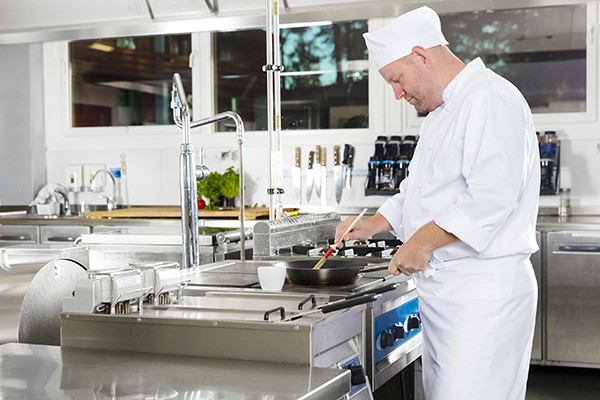The 5 Most Important Rules in a Restaurant Kitchen

While some states require anyone that works in a restaurant to get a food handler’s safety card and update it every few years, other states don’t have those requirements. Whether or not you work in those states, it pays to get a refresher crash course every now and then. If you work in a restaurant, in any position whatsoever, these are the five most important rules in a restaurant kitchen.
1. Label and Date
Prepping food in a restaurant is one of the most important and, unfortunately, time-consuming jobs. While owners, managers, and chefs try to prep only the amount of food that can be used before it is no longer considered safe, there are times when business is slower than projected. If the health department should come in for a random inspection, this is one of the first things they’ll look for. After securing a lid on each container, label and date them and arrange the walk-in with the newly prepared foods in the back.
2. Observe the F.I.F.O. Rule – ALWAYS
This brings us to the F.I.F.O. rule – First In, First Out. When the restaurant is busy, there is no time to stand there reading labels. That’s why the prep person is required to arrange the refrigerator in such a way that all perishables can be pulled out in order of age, with the oldest foods nearest the front. If you reach for an item and noticed it is outdated, it is your responsibility to set it aside and reach for the next. Don’t simply throw it out because management needs to inventory excess (waste) in order to plan efficiently going forward.
3. All Plates MUST Be Scraped and Rinsed Before Washing – Do You Know Why?
Do you know why all plates must be scraped and rinsed well prior to being run through the dishwasher? While you might be tempted to say that the dishwasher doesn’t have a garbage disposal, that isn’t the reason at all! Did you know that dishwashers in restaurants are technically just sanitizing appliances? They are run through a sanitizing solution which stays in the machine for many, many cycles. If you don’t thoroughly rinse the food, those dishes will eventually be almost as dirty as when you started the cycle. If you have any questions on what scraps can and can’t be run through your restaurant’s garbage disposal, check out the information on mrgarbagedisposal.com. Some things like bones need to go directly into the trash can.
4. Observe Proper Handling of Foods
The rule is generally stated that you shouldn’t touch food, but that doesn’t give you enough information. There are times when you must handle food and so safe handling requires single-use gloves. Pick up rolls and bread with tongs if available, if not, reach for the box of gloves and then dispose of them after you’ve placed the bread or rolls on a plate or in a basket. Remember, the operative term is "single use."
5. Safe Holding Temperatures
Sometimes referred to as critical food temperatures" these are the minimum requirements for serving or storing foods. For example, if you have a hot lunch buffet, you need to know that the minimum temperature for holding foods on steam tables is 135° F for hotter while cold foods must be kept at 41° F or colder. Along with properly storing foods and observing the F.I.F.O. rule, this is of extreme importance as far as food safety goes. Always think safety first. No matter what you are doing, safety is of vital importance. These five rules will help to ensure that you are following best safety practices in your restaurant. Learn them well.


